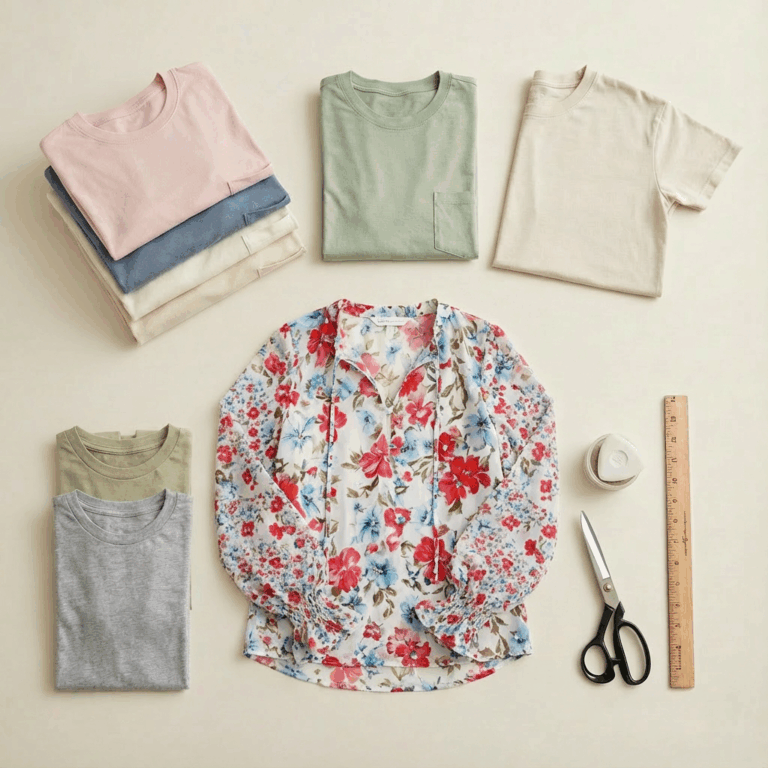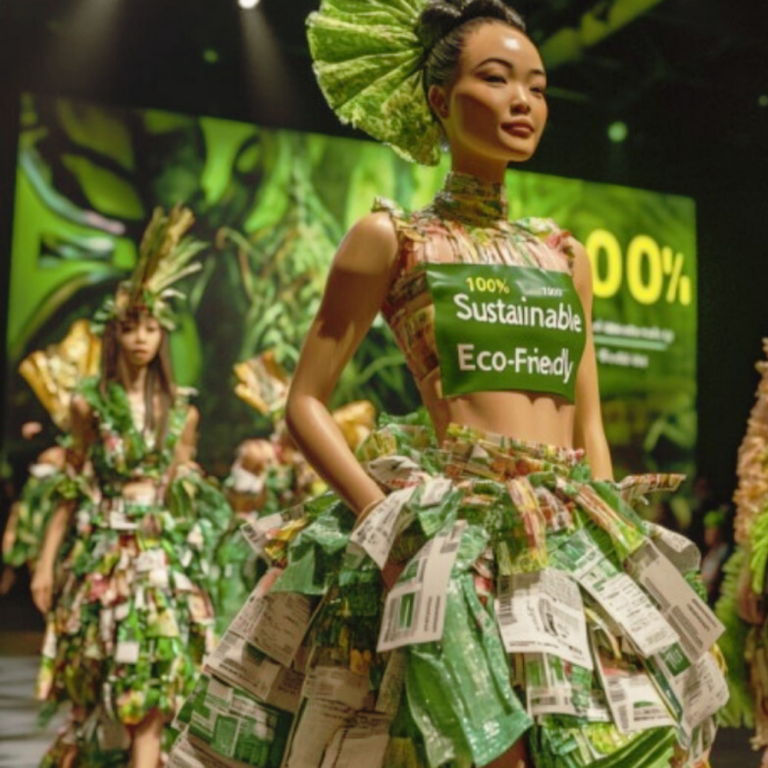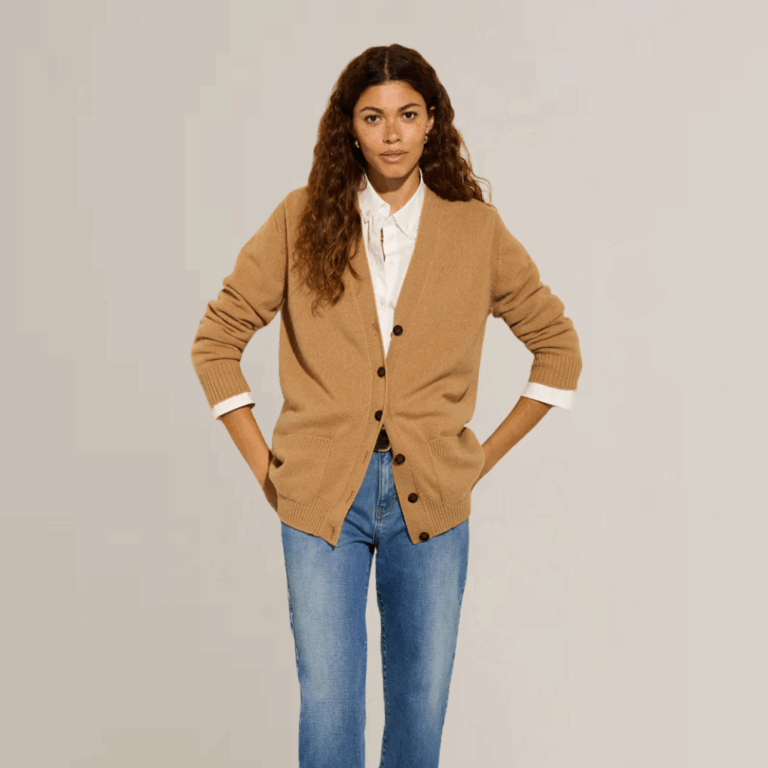
Let’s be real—fashion can be fun. The colors, the cuts, the thrill of a good thrift find or a flash sale that just so happens to have your size left. I’ve been there. For years, I didn’t think much about what my clothes were made of, let alone who made them or where they’d end up after they left my closet.
But then I started asking questions that weren’t about the price tag or the latest sale. What materials are we wearing? What happens to all those stretchy, synthetic fabrics when we’re done with them, or even while still wearing them?
And that’s when I learned something that changed how I shop forever: Our clothes might be shedding more than just outdated styles, they’re shedding plastic. Tiny, invisible plastic fibers. Every. Single. Wash.
Yup. It turns out that much of what we wear is made of plastic, often in disguise. Polyester, nylon, and acrylic might feel soft and stretchy, but they’re synthetic through and through. Every time we wash these garments, microscopic plastic fibers are released into the water system, fibers that never break down and remain where they don’t belong.
This is where conscious fashion comes in. It’s not just about slow styles or ethical sourcing (though those matter, too). It’s about being aware of the full life cycle of our clothing, from the materials it’s made of to how it impacts people and the planet, to what happens after it’s donated, discarded, or relegated to pajama status.
What Is Conscious Fashion?
Conscious fashion isn’t about chasing trends. It’s about pressing pause and asking, “Do I really need this?” and “Who or what paid the price for this $4 t-shirt?”
At its core, conscious fashion is about making intentional, ethical, and sustainable choices for clothing. Rather than just focusing on the price tag, it prioritizes people, the planet, and purpose. This means supporting fair wages for workers, selecting fabrics that are environmentally friendly, and opting for designs that stand the test of time.
Conscious fashion also aligns with values such as reducing environmental impact, eliminating plastics (including synthetic fibers), ensuring fair labor practices, and embracing high-quality designs that respect the resources behind each piece.
But don’t worry, it’s not about completely overhauling your wardrobe with pricey “eco-friendly” gear. In fact, it’s often about buying less, choosing better, and making what you already own last longer. It’s about asking questions: Can that polyester shirt be replaced with organic cotton? Or do I need another sweater?
It’s not about perfection. It’s about being more thoughtful, more selective, and more aware of the stories behind the clothes we wear.
How Synthetic Fibers Fuel Microplastic Pollution
Every time we wash synthetic clothing; tiny plastic fibers are released into the water. Most aren’t filtered out by wastewater treatment plants, which means they end up in rivers, oceans, and even the soil that grows our food.
Many of the materials used in modern clothing, such as polyester, nylon, acrylic, and spandex, are forms of plastic. They’re made from fossil fuels and don’t break down in the environment like natural fibers do. Instead, they fragment into smaller and smaller pieces over time, becoming what we now refer to as microplastics.
These fibers are shed as we wear our clothes, but the shedding occurs during the washing process. Whenever we throw a load of synthetic fabrics into the machine, we send hundreds of thousands of microplastic fibers down the drain. According to a study by the University of Plymouth, acrylic fabrics are the most significant contributors, releasing around 730,000 fibers per wash at typical temperatures of 30–40°C. Polyester isn’t far behind, with nearly 500,000 fibers per load.1 Polyester-cotton blends do a bit better, but they still shed.
And those fibers? They don’t just vanish. Because they’re so small, they slip right through wastewater filters and end up in rivers, oceans, and even in soil. From there, they can stick around for decades and travel a lot farther than you’d think.
One of the simplest ways to reduce your laundry’s impact is to switch to natural fabrics like 100% cotton. The fewer synthetic fibers we wash, the fewer end up where they don’t belong.
Conscious Wardrobe Swaps That Cut the Plastic

Let’s say you’re standing in a fitting room (or scrolling late-night sales in your sweats), and you pause to check the tag. That moment? That’s where conscious fashion begins. It’s not about ditching your entire closet or buying a whole new wardrobe, it’s about making more thoughtful choices, one piece at a time.
Thrift, Swap, Upcycle
A conscious closet doesn’t mean you need to splurge on “eco” brands. In fact, the most sustainable piece of clothing is the one that already exists. Your best friends are secondhand shops, online resale platforms, and local clothing swaps. Bonus? These options usually help your wallet, too.
Have something you’re no longer wearing? Mend it, repurpose it, or pass it along. Even simple fixes (like sewing a button or hemming a tear) can keep clothes in rotation and out of landfills.
did you know?
Patagonia Recycled Collection
Patagonia offers a collection of recycled and repurposed clothing through their Worn Wear and recycled gear shop. It’s a great example of a brand closing the loop—repairing, reselling, and reusing their gear instead of creating more from scratch.
Related Article: How to Refresh Your Wardrobe by Embracing the Slow Fashion Movement
Rethinking Laundry as Part of Conscious Fashion
It’s easy to think of clothing as the main event and laundry as just the afterparty, but what happens in the wash matters more than most of us realize. Especially when it comes to synthetic fabrics, laundry quietly and invisibly has a significant environmental impact.
Each wash can release hundreds of thousands of tiny plastic fibers from our clothes into the water system. These microfibers are too small to be filtered out, so they end up in oceans, rivers, and even agricultural soil.
This doesn’t mean we need to overhaul our laundry rooms overnight. But it does mean that how we care for our clothes is part of the bigger story of conscious fashion. Here’s what that might look like:
- Washing only when necessary, rather than out of habit. Most clothes, especially synthetics, last longer and shed fewer fibers with fewer washes.
- Choosing cold, gentle cycles to reduce wear and tear.
- When possible, avoid the dryer, especially for anything made with plastic-based fabrics. Or, when you do use the dryer, skip the dryer sheets and opt for wool dryer balls.
- Add microfiber filters or wash bags that catch some of the plastic threads before they reach the water system.
- Switching out plastic-heavy detergent jugs for low-waste options like refillable containers—or better yet, making your own. (I’ve got a full guide to eco-friendly laundry detergents and a step-by-step recipe for homemade detergent if you’re curious.)
None of these are perfect fixes on their own. But they do add up. Just as choosing a thrifted cotton tee over a brand-new polyester top helps slow the waste cycle, these choices are at the heart of conscious fashion.
This Has Been About Conscious Fashion
Conscious fashion isn’t about getting it perfect. It’s about caring about the hands that made your clothes, the materials that touch your skin, and the long journey each item takes even after it leaves your closet. When we choose to be more mindful of what we wear, we’re not just making a style statement; we’re making a values statement.
View Article Sources
- Armstrong, M. (2022, August 11). Laundry contribution to world microplastic problem. Statista. Retrieved April 7, 2025, from https://www.statista.com/chart/17937/laundry-contribution-to-world-microplastic-problem/






